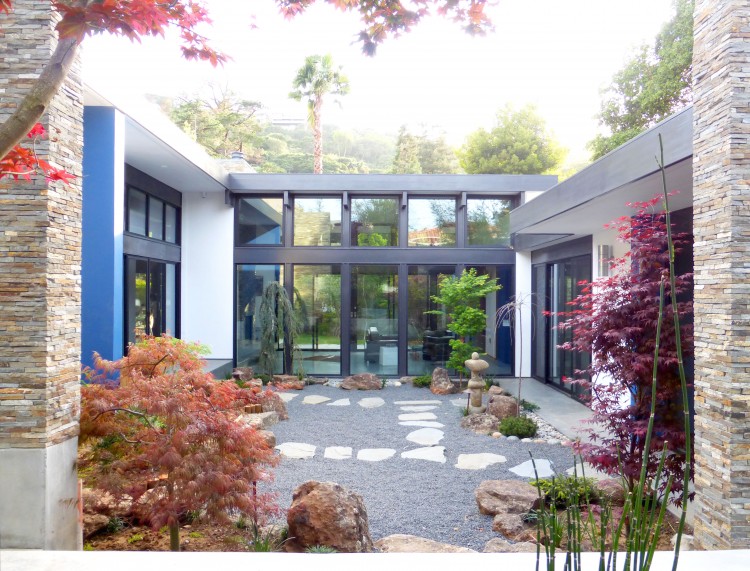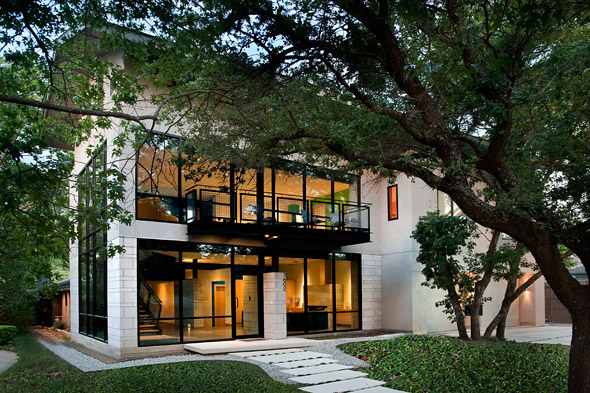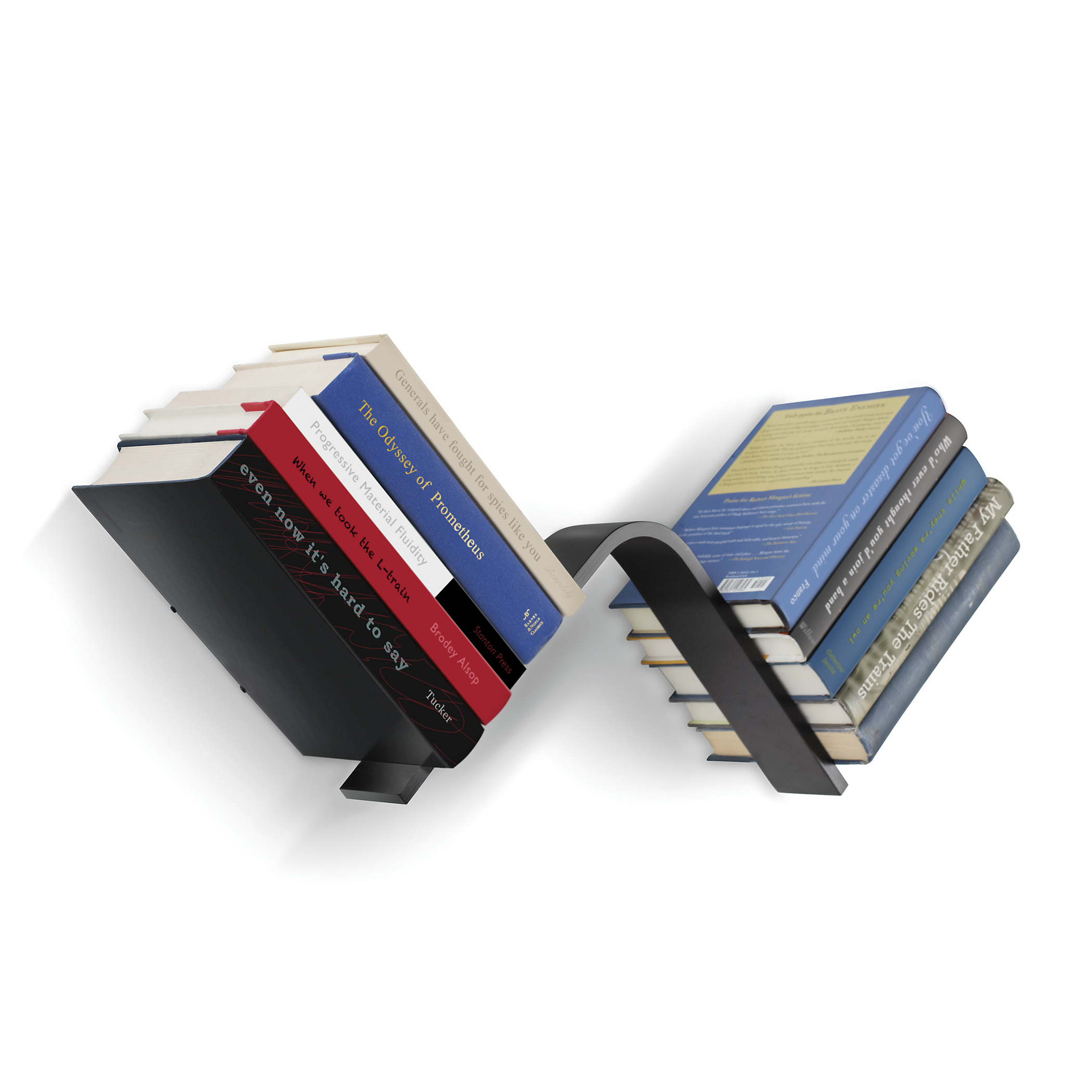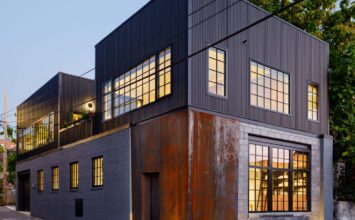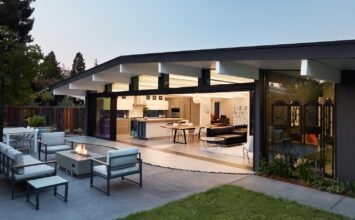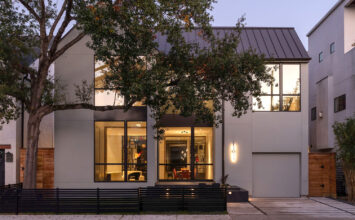
In 2001, architect John Klopf set up his Bay Area-based practice after graduating with a master’s from U.C. Berkeley. In 2002, he renovated his first Eichler home. Today, John began work on his 100th mid-century modern home.
Joseph Eichler was one of the most prolific real estate developers in post-WWII America, responsible for the construction of over 11,000 homes throughout California over just two decades. Today, Eichler and mid-century modern homes are enjoying a resurgence of popularity among homeowners – many of whom are turning to are turning to Klopf Architecture to help bring these classic designs into the 21st century.
We sat down with John – who has two homes on the upcoming Silicon Valley Modern Home Tour – to take stock of the of mid-century modern resurgence, why homeowners are so drawn to the design, and the challenges of updating an Eichler.
Q&A w/ John Klopf
You have two homes on the tour – an Eichler-inspired 21st century home as well as an updated Eichler. Your firm is known for doing remodeling and additions on Eichler and other mid-century modern homes – you’ve taken on nearly 100 Eichler or mid-century modern homes since launched your firm in 2001! What accounts for the surge in popularity of these homes?
I can’t claim to know why the resurgence of these homes, but I can tell you what people tend to like about them. Our clients like the openness, brightness, cozy scale, and clean lines of mid-century modern homes. They also seem to like the indoor / outdoor living opportunities that arise from combining our Bay Area climate with courtyards, atria, walls of glass, overhanging roof eaves, and openable walls. We have observed from owners that in the 1980s and most of the 1990s mid-century homes were considered “just another home” and may have sold for less than a similar sized home in a similar neighborhood. But starting in the late 1990s and gaining more momentum every year, home-buyers have paid the same or more for modern homes, and have been looking for them specifically. That increase in awareness of and appreciation for the style explains the 100 mid-century modern homes we’ve worked on so far (we just started #100 today).
Why, in particular, do you think homeowners come to you?
Homeowners are looking for an architect who gets the mid-century modern style and also gets them. We really try to listen to clients and design their homes in a completely custom way that suits them without ruining the style of the house. There are other architects who know mid-century modern homes, but we really, really know this style. I personally have been in hundreds of these homes, and studied the original drawings and details. We have worked hard to keep the original look and feel of the homes wherever possible while still building to 21st century standards. We look at our role as updaters, making these homes work for today’s owners and their families. That may mean adding to the home (sometimes we have heard the comment “oh, that was an addition? I couldn’t tell”) and sometimes it means making changes, painting the house, removing some of the signature elements like wood wall panels, etc. But what we put back is in the spirit of modernism; we hope that the original architects would approve of the ways we are updating their designs.

The somewhat recent Steve Jobs biography talks about how his growing up in an Eichler-esque “likeler” home (designed by Anshen and Allen) influenced his design sensibility. How do you think the spaces in which we live affect the ways in which we live?
People like to be connected to the outdoors, but also protected from heat, cold, too much sun, wind, and rain. Growing up in a boxy home with small punched windows prevents people from noticing the weather, connecting to the landscaping, or feeling a sense of relief that people can get in a more open, airy home that has good connection to the outdoors. If I lived in a home like that, I’d feel more grounded and would appreciate the views of nature and sense of being in a place that this type of architecture provides.
As for the design style in particular, clean, simple lines are uncluttered and allow people to display their furniture, art, and lives against a simple, unified, and understandable background.

It’s easy to think of the Eichler as a very American – specifically Californian – design. But it’s actually borrows a lot from Japanese design ideas. Can you speak to this Asian influence, especially given your time abroad?
Modularity like the post and beam construction, the sense of guidance between outdoors and indoors that sliding panels, decks, patios, and overhanging roof eaves provide, the heavy use of wood, and the concept of bounding space not with the wall of the house but with the wall of the courtyard— all these Asian concepts really fit with California’s available building materials and climate. When I was studying architecture on the independent Branner Travel Fellowship I spent two months in Japan studying the modern and classical architecture. The classical architecture there has the modularity, repetition, clean simple detailing, and transitions between indoors and outdoors that I feel in love with in school and have been fortunate enough to work with on the mid-century modern homes and new homes that we’ve designed.

What have you found to be the greatest challenge in bringing an Eichler home into the 21st century?
Many of the challenges are technical in nature, but the overall biggest challenge is that the houses are relatively small, and the spaces have been just about as efficiently used as possible in many cases. Therefore, in order to create larger spaces out of the sub-standard spaces in the house, sacrifices may have to be made. Sometimes we have to add on. Sometimes we have to re-arrange spaces and lose a bedroom for instance. People have changed, possessions have changed, and technology has changed. Fitting today’s people, possessions, and technology into very small houses can be a challenge.

You have researched and taught on the topic of sustainability in architecture. How do you see sustainable and green architectural practices being embraced in the Bay Area?
Silicon Valley companies are very interested in energy efficiency and green practices these days. The people who work there are likewise interested in it for their own homes, too. We find our clients are often interested in energy and water conservation in particular. We used to have to push people in this direction, but these days people are more willing to design based on these goals. We have more and more interest from clients in net-zero-energy buildings and even Passiv Haus. Additionally, California has a couple of building codes that mandate energy and water efficiency to a pretty high level. And the codes are tightened every three years, which in my opinion is a great policy because when the entire industry is required to meet these standards, it is less of an additional expense for each individual homeowner, and the quality and comfort of everyone’s homes will be higher across the board… while also reducing pollution, waste, and carbon emissions. Some of our clients are also concerned about indoor air quality and other general environmental / green issues like that, but not as many. There again, the California Green Building Code (”Calgreen”) mandates that healthier products be used in all projects regardless. So it is a heyday for green and sustainable architecture in our area, with prospects that it will improve over time.
Be sure to get your tickets to the Silicon Valley Modern Home Tour on Saturday, May 16 to check out John’s homes in person!
